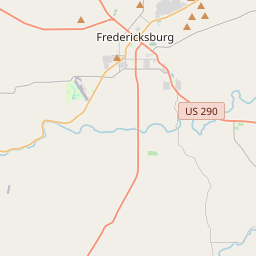Moritz-Hitzfeld-Jacoby House






Built for newlyweds Edmund (1884-1958) and Anna (1881-1968) Moritz in 1907, this house has been occupied by the descendants of three of Fredericksburg's earliest families. Edmund and his father, Joseph, used limestone from their family-owned quarry nearby to build the house with the help of Anna's father, carpenter John Metzger, Sr. The house exhibits late Victorian-era styling with features of Germanic construction, which includes the use of native stone. The house was purchased by Levi and Caroline Hitzfeld in 1914 and in 1941 by Felix and Emma Jacoby.
Recorded Texas Historic Landmark - 1994
As one of the most visible programs of the Texas Historical Commission (THC), historical markers commemorate diverse topics in Texas history, including: the history and architecture of houses, commercial and public buildings, religious congregations, and military sites; events that changed the course of local and state history; and individuals who have made lasting contributions to the state, community organizations, and businesses.
Texas was once an independent country: After winning its independence from Mexico in 1836, Texas became its own country, known as the Republic of Texas. It existed as an independent nation for nine years before being annexed by the United States in 1845.
The pioneer settlers of Gillespie County were mostly of German descent, seeking a new life and economic opportunities. They developed a thriving agricultural community, growing crops like cotton, corn, and wheat. The early settlers also established successful farms and ranches, making Gillespie County one of the leading agricultural regions in Texas.
During the Civil War, Gillespie County experienced some conflict and tensions due to the differing loyalties of its residents. However, after the war, the county experienced a period of growth and prosperity as the railroad reached Fredericksburg, the county seat, in 1913. This opened up new opportunities for trade and commerce, leading to economic development and population growth.
In recent years, Gillespie County has become a popular tourist destination, attracting visitors with its rich history, charming small towns, and beautiful natural surroundings. Today, the county is known for its wineries, historic sites, and festivals that celebrate its German heritage. It continues to thrive as a center of agriculture, tourism, and cultural preservation in the heart of the Texas Hill Country.
Gillespie County Timeline
This timeline provides a condensed summary of the historical journey of Gillespie County, Texas.
- 1848 - Gillespie County is established and named after Robert Addison Gillespie
- 1849 - The county seat is established in Fredericksburg
- 1850s - German immigrants begin settling in the area, shaping the county's culture and economy
- 1861-1865 - Gillespie County residents participate in the American Civil War
- 1880s - The county experiences growth with the arrival of the railroad and expansion of agriculture
- 1900s - Gillespie County faces challenges such as the 1900 storm and the Great Depression
- 1940s - Fort Mason is established as a training center during World War II
- 1970s - Tourism becomes an important industry, boosting the county's economy
- 1990s - Fredericksburg becomes a popular tourist destination with its historic downtown and wineries